In terms of urgency and cost, some repairs can take drivers by surprise. One such is replacing a wheel bearing. Though a damaged wheel bearing might appear to be a minor issue, failure to address it can result in far-reaching consequences ranging from reduced vehicle performance to safety threats. But how much does this kind of repair cost anyway? This guide offers all the facts about wheel bearing replacement costs, factors affecting prices, and ways to ensure that you choose what is best for your car and your finances. Whether you are simply an experienced car owner or an individual trying not to spend extra on unforeseen events, this post will tell you everything you need about this vital topic in the sphere of car maintenance.
What is the average cost to replace a wheel bearing?
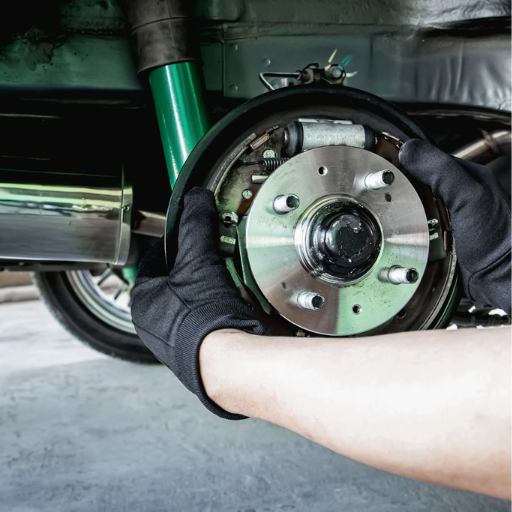
Depending on the labor rates in your locality, whether or not a repair shop uses original equipment manufacturer (OEM) or aftermarket parts and make of your vehicle, the average cost to replace a wheel bearing usually ranges between $150 and $500 per wheel. So that’s mainly why this service costs so much: most of what you pay will be for the time taken to take apart everything in addition to how nicely it is put together again. The component itself generally goes for about $50 to $200; however, it is the labor that takes up most of the expense because it entails extensive disassembling as well as precision fitting.
Factors affecting wheel bearing replacement cost
The first is that the make and model of your vehicle are very crucial; luxury type ones or special vehicles often have expensive parts as well as higher labor charges. Furthermore, deciding between OEM (Original Equipment Manufacturer) or aftermarket parts has significant implications on the final price you’ll pay, with OEM parts usually being more expensive but offering a closer match to the original performance. Labor rates differ significantly by region and also among repair shops; hence, location is very vital in costs. Finally, how much damage or corrosion exists around the wheel assembly may increase labor time and complexity, which is why it affects pricing. By knowing these things, one can make realistic expectations about their repairs.
Cost breakdown: parts vs. labor
I would like to make a few clarifications regarding the cost breakdown of parts and labor. Simply put, knowing these facts will enable you to figure out what your money is actually buying when it comes to repairs that sometimes appear expensive. Generally speaking, here is how each point splits:
- Parts Costs: The price of parts may vary depending on whether you are opting for OEM (Original Equipment Manufacture) parts or aftermarket replacement. Typically, OEM parts cost more due to the fact that they are designed and manufactured by the same company that assembled your car; they provide a perfect fit and reliability. Conversely, third-party manufacturers produce aftermarket parts, which mostly sell cheaper, but their quality plus compatibility might not always be up to the OEM standards. Sometimes, it’s about your budget and how much precision performance means to you.
- Labor Costs: Labor costs depend on two main factors, mainly the complexity of the work and the location of the repair shop. For instance, mending a minor wheel assembly problem may require just one hour of labor in most cases, while extensive damage like corrosion may take hours to address properly. Also, labor rates differ greatly across localities and shops. Of course, skilled technicians or those in high-cost living areas will charge higher rates as well. Just enquire about an estimate from your repair center prior so that you don’t get shocked later on.
- Other Influencing Parameters:
- Extent of Damage: The wheel assembly and surrounding parts are in worse condition, the more time it will take to repair and more laborers’ efforts it would require.
- Specialized Equipment: Some repairs dictate the use of advanced or specialized tools, which can slightly drive up labor costs due to the time spent or skill needed.
- Shop Overhead Costs: Remember that some fraction of this charge goes towards maintenance of the facility, training for technicians as well as other operational expenditures.
The final cost of repairs can be calculated by dividing it into these groups, enabling you to understand what the total repair bill includes. If there are any doubts concerning some costs, it is crucial to request more information from your workshop. Key aspects of decision-making are openness and clarity!
Average cost range for different vehicle types
When it comes to motor vehicles, repair costs can differ greatly. On average, common repairs for regular sedans will cost between $500 and $1,500, depending on the service needed. This may range from $800 to $2,500 when it comes to SUVs and trucks, which usually need sturdy parts. However, for luxury cars or high-performance cars that employ specialized elements and advanced technologies, among others, you can pay up to $5,000 or even more for a single repair job. Also, due to the complexity of systems and battery technologies, electric and hybrid vehicles have higher average repair costs that are around $1,000-$3,000 on an annual basis. These figures should be treated as general guidance only since actual prices could change based on the garage itself, your location, or other reasons responsible for such variations.
How do I know if my wheel bearing needs to be replaced?
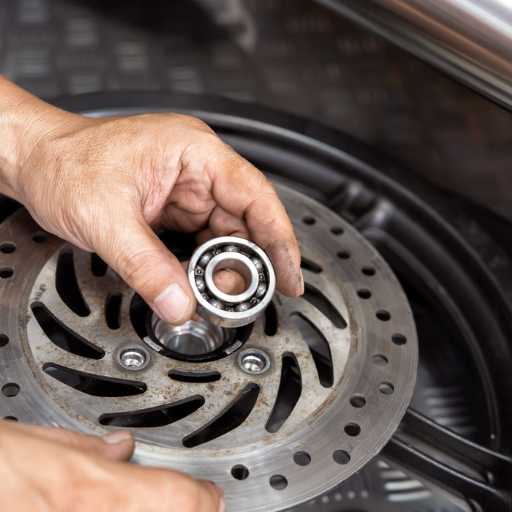
there are some obvious signs that your wheel bearing might be going bad. One of the most common symptoms is a growling or humming noise coming from the wheels, sometimes getting louder as you speed up. You might also notice uneven tread wear or shaking in your steering wheel, especially when driving fast. In case this occurs while turning or one feels a wobble in the tire, it is high time to take action. Dismissing these signals could result in more severe problems; thus, I advise that wheel bearing concerns be handled right away.
Common signs of a failing wheel bearing
It must be noted that failing wheel bearings usually have obvious signs and symptoms that should not be ignored. Some of the most prevalent indications are sounds like growling, humming or grinding coming from the wheels. Additionally, you may notice uneven tire wear, vibratory steering wheel, or reduced stability while turning. When these symptoms appear, it is important to get professional checking and mending to avoid possible accidents and more damage to your vehicle.
Importance of timely wheel bearing inspection
I would like to point out that addressing issues that arise from wheel bearings is of great importance in my capacity . From what I have observed, neglecting the early warning signs of a bad wheel bearing can lead to more serious consequences since not only does it destroy the bearing itself but also affects other parts, such as the hub assembly and suspension. More importantly, having worn wheel bearings can undermine your vehicle’s stability and control, thereby making it more prone to road accidents. Routine checks, along with instantly taking care of any unusual sounds or changes in performance, will help you stay safe and save on repairs later on.
Consequences of driving with a damaged wheel bearing
You should never drive with a damaged wheel bearing because it can cause serious results such as reduced control, abnormal tire wear, and compromise other vital parts like the hub assembly and suspension. The least of these is when they result in complete wheel failure which exposes you to more accidents. By addressing any signs of trouble in the bearings, safety remains intact while avoiding unnecessary costs for repairs.
Can I replace a wheel bearing myself to save money?
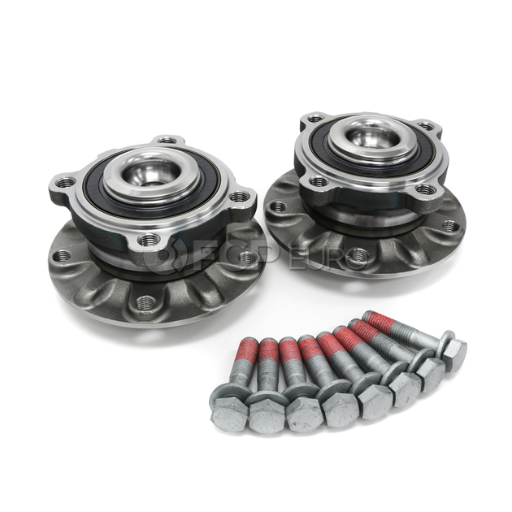
Yes, you can maintain a wheel bearing yourself at home to save money, however I advise you to be careful. Wheel bearing replacement necessitates specialty tools, mechanical know-how, and an understanding of your vehicle’s parts. Definitely, yes, if one is confident in fixing cars and has the right tools for it. Nevertheless, it’s a crucial part of your car and, if done incorrectly, could lead to safety hazards or even more expensive damage later on. If there is anything that you are uncertain about, then it would be better to contact an expert who will ensure the accuracy of the work done.
DIY wheel bearing replacement: pros and cons
DIY wheel bearing replacement comes with distinct pros and cons. On the positive side, it can save you some money on labor costs, as well as give you a sense of accomplishment if done right. More importantly, it is a good way for you to understand your car’s mechanics more deeply. Nevertheless, there are disadvantages, including the use of special tools, knowledge of technicalities, and accuracy—any mistakes made when installing them can jeopardize safety and result in expensive repairs. However, if someone has the ability and equipment required, they may wish to try, but for those who have no clue, the best way to seek professional assistance is the best route to take.
Tools and skills required for self-replacement
you need to have the right tools and technical skills to replace yourself. At least, you will have to use some high-quality sets of wrenches, screwdrivers, a torque wrench and maybe other special devices depending on how tough is component replacement. Besides that, while doing this work, one ought to keep in mind such items as a car lift stand, floor jack, or even protective gloves. In terms of skills, it is crucial for someone attempting self-replacement to know how mechanical systems function well enough to read workshop guides and attention to detail. Confidence and precision are the most essential things when taking such kind of risks because mistakes may cost a lot.
When to seek professional help for wheel bearing replacement
At times, replacing a wheel bearing can be possible for someone who has the right tools and experience to deal with it. Yet, there are some particular situations that will make you consider seeking help from experts. Below are key factors that you need to bear in mind before deciding whether to do it on your own or consult a professional:
- Lack of Experience or Confidence
It would be a good idea to get the services of an expert if you are not familiar with repairing vehicles ,especially those that entail suspension or braking systems. Your wheel bearings are crucial for your car’s safety and any mistakes made during their replacement can result in more mechanical breakdowns or accidents.
- Unusual Vehicle Design
Some vehicles have unusual wheel hubs or bearing assemblies that call for special tools and knowledge. There are some models that require bearing pressing or extracting; this is difficult if there is no hydraulic press or any other specific equipment.
- Signs of Extensive Damage
If the wheel bearing failure has caused collateral damage, such as warped rotors, damaged axle shafts, or misaligned suspension components, then calling professionals is necessary. Such issues may also necessitate extensive repairs beyond the simple act of changing a bearing.
- Time and Accessibility Constraints
When you have limited time and space, it may not be possible to do it yourself. Professionals possess appropriate skills as well as tools to handle the task quickly and safely.
- Persistent Issues After Replacement
Should you hear weird noises or feel vibrations after replacing a wheel bearing, it’s necessary to go for a consultation with a mechanic. Such symptoms may indicate that the installation was wrong or there are other secondary problems that need further diagnostics.
Make your decision about DIY Repair Vs. Professional repair after considering these factors. But remember, the safety and functionality of your car should be your top priority.
Are there differences in cost between front and rear wheel bearing replacements?
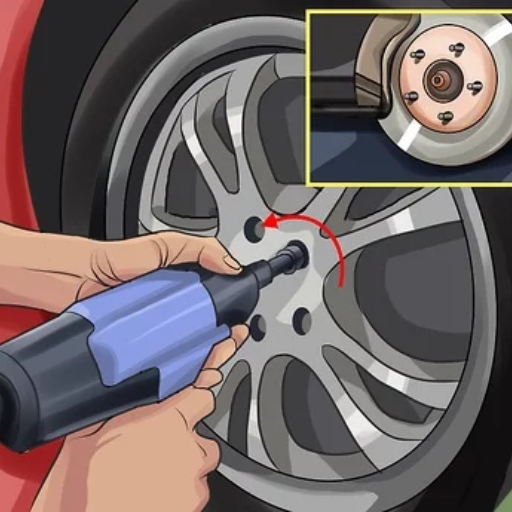
Certainly, there are discrepancies in the costs of front and rear wheel bearing replacements, I can say it largely depends on how complex the repair is and what model/make a vehicle is. One thing to keep in mind when doing this is that front wheel bearings are often integrated with the hub assembly itself,f which makes replacing them more difficult and thus costlier. On the other hand, changing rear ones may sometimes be more straightforward, especially if they’re not part of a hub assembly. But remember: this doesn’t apply to all cars or special systems that might reverse these statistics. Keep in mind that parts and labor rates differ, so you should obtain a precise estimate for your car before proceeding with any work.
Front-wheel bearing replacement cost.
The cost of replacing a front wheel bearing generally varies between $200 and $500 according to your make, vehicle model, and labor rates in your area. This estimate includes both parts, ranging from $50 to $150 usually, and labor, which may take between 1-2 hours depending on the complexity. Getting an accurate quote specifically for your car from a trusted mechanic is always best.
Rear wheel bearing replacement cost.
The cost of replacing a rear wheel bearing is quite similar to that of a front wheel bearing, generally falling between $200 and $500. A typical range for parts in my experience on rear wheel bearing replacements is between $50 and $10,0, with labor possibly varying depending on the vehicle’s configuration and how easy it is to reach the components. In terms of effort needed, rear bearings are often slightly harder than their front counterparts, hence higher costs for labor. I always advise getting a price quote from an honest mechanic who will provide you with one based on your car; things such as AWD systems or specialty tools might affect pricing.
How long does a wheel bearing replacement typically take?
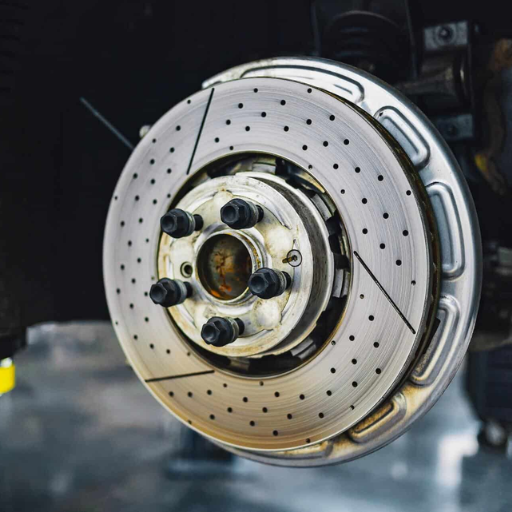
In my experience, replacing a wheel bearing takes around one to two hours per wheel. This exact time might differ depending on the car model and make, the state of elements, and the necessity to dismantle other components for easy accessibility. This could take more time when handling vehicles with complex suspension systems or those that have rusty parts.
Average time for professional wheel bearing replacement
Normally, replacing a wheel bearing in a professional manner can take 1-2 hours for each wheel. It is enough time to ensure that you have taken apart, checked and put back the components appropriately without any safety issues being overlooked.
Factors that can affect replacement duration
A number of different factors come into play when it comes to the length of time required to replace a wheel bearing. Familiarity with these variables can offer insight into what the process entails:
- Vehicle Make and Model
Different vehicles possess various designs that can affect how complex it is to replace wheel bearings. For instance, luxury or high-performance cars often have more complicated suspension systems or wheel configurations that could require more time and effort to reach and replace the bearings.
- Type of Wheel Bearings
Press-in and bolt-on are the two main types of wheel bearings. Replacing press-in bearings usually takes longer because special tools are needed to press them into place. Conversely, bolt-on bearings are generally faster to replace as they come with bolts that can be easily detached.
- Condition of Existing Components
Rusty or corroded artifacts such as bolts, nuts, or the hub assembly can also lengthen replacement time greatly. For this reason, additional steps may be needed to remove these components safely without damaging surrounding parts, e.g., penetrating oil or specialized tools.
- Tools and Equipment Availability
The presence of key equipment like hydraulic press, bearing puller, or impact wrenches greatly impacts the efficiency of the job. Without appropriate equipment, this process may take a lot longer than expected.
- Mechanic Experience
The skill level and the knowledge of a mechanic for this specific vehicle are also significant. Usually, experienced experts with a detailed understanding of the car’s design can complete the replacement faster than a first-time installer.
- Location of the Wheel Bearing
Wheel bearings located on the rear axle may require more time to replace than those on the front axle, depending on which drivetrain layout the vehicle has (for example, front-wheel drive, rear-wheel drive, or all-wheel drive).
- Additional Repairs or Adjustments
In some cases, replacing a wheel bearing reveals other problems, like damaged hub assemblies or worn-out brake components. Changing these issues together with bearing replacement may expand overall repair time as well.
Both drivers and mechanics can better estimate the time required for a wheel bearing replacement by considering these factors and preparing accordingly for any potential complications.
Impact of replacement time on overall cost
I can tell you that the replacement duration of a wheel bearing affects the overall cost of repair. For example, labor costs typically make up a large chunk of the expenses, and longer times for replacement result in high labor charges. If further troubles, such as damaged hub assemblies or worn brake components, are revealed throughout this process, then the entire budget may increase even more. That is why correct identification of the issue at hand and anticipation for anything while maintaining time and money effectiveness is imperative so as to assure the safety and performance of the vehicle.
Is it necessary to replace all four wheel bearings at once?
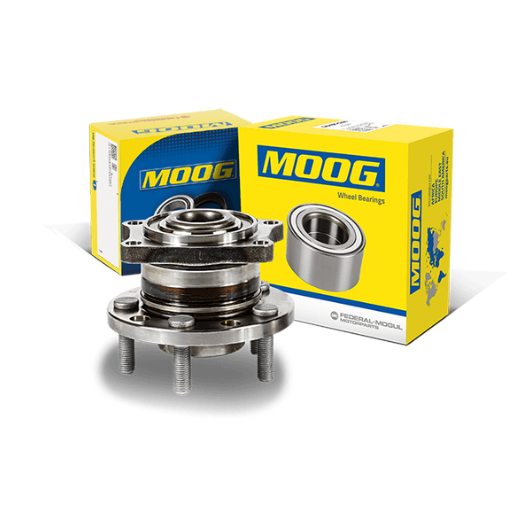
Do you have to replace all the four-wheel bearings at once? In my experience, wheel bearings usually wear out at dissimilar rates depending on factors such as driving conditions and mileage. Often, it is only one or two that will fail at any given time. Instead of preemptively replacing them all, I suggest focusing on individual bearings that exhibit symptoms like grinding noises and vibrations associated with wear and tear. When done specifically, this saves cost and time and guarantees a dependable and safe vehicle for your use.
When to consider replacing multiple wheel bearings
When various wheel bearings become worn out or fail at the same time, such as unusual sounds, vibrations, or poor performance, it can be reasonable to have them replaced altogether. It may make sense to do so more, especially if the vehicle has covered many kilometers and both bearings on one axle manifest the symptoms. Furthermore, changing numerous bearings simultaneously would save labor and guarantee uniform operations of a car.
Cost implications of replacing all four wheel bearings
replacing all the four-wheel bearings at the same time can be quite expensive, based on your vehicle’s situation. The average cost for a bearing ranges between $200 and $500 per each, including labor expenses. This sum multiplied by four adds up very quickly, which makes it a big investment. Nonetheless, if your car is old, has high mileage or bears similar signs of wear in all the wheels then this might be an advisable option for long-term dependability. Labor efficiencies are worth considering because replacing multiple bearings during one service visit can sometimes reduce overall costs compared to spreading them out. Finally, I suggest going to a mechanic who you can trust to check your wheels’ wear and tear so that you don’t spend more than is necessary or carry out inappropriate repairs.
Balancing cost vs. long-term vehicle maintenance
the art of balancing maintenance costs with the long-term needs of a vehicle lies in the discipline of strategic choice and opportunistic timing. I usually tell my clients to consider their current economic position vis-à-vis future recurrent minor fixes’ expenses. To save significant amounts or avoid hassles tomorrow, it is better to procure quality parts beforehand or address multiple associated problems during one service call. Moreover, regular servicing ensures that your car runs without hitches that may result in sudden failures. Lastly, plan ahead and have confidence in your mechanic as they offer you cheap yet long-lasting solutions for your automobile.
How can I save money on wheel-bearing replacement costs?
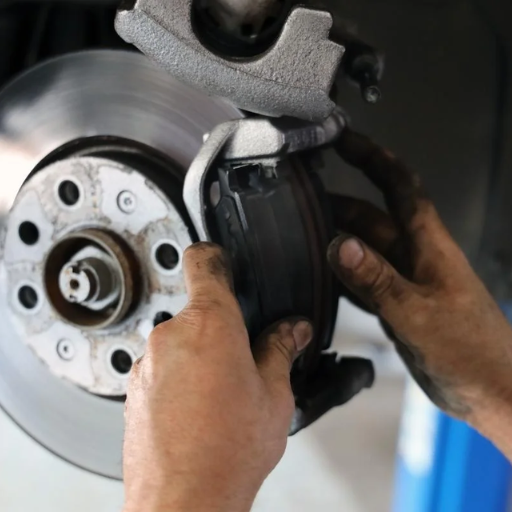
Speaking of ways to cut the cost of replacing wheel bearings, I always suggest opting for good quality aftermarket parts from reliable suppliers rather than going with only dealership options, which may be more expensive. Moreover, if you are familiar with some vehicle maintenance basics, you might want to help out in the less technical areas, like taking off the wheel, thus lowering labor expenses. Another thing that can help avoid more expensive repairs further down the road is doing inspections on a regular basis. Finally, establishing a good rapport with an experienced and honest mechanic can also play a part in helping you get reasonable charges and trustworthy workmanship.
Comparing quotes from different mechanics
Whenever I compare quotes from different mechanics, availing estimates that are transparent and itemized is the first priority. With a detailed quote, I am able to know what I am paying for, be it parts, labor, or any other miscellaneous charges. Furthermore, I always try to check if prices/charges are the same in different garages, which may mean that someone is overcharging me or compromising the quality of service. It is also important to consider how the mechanic is known; cheap does not necessarily mean best, especially when it comes to quality. Personally, checking reviews and testimonials, as well as interacting with several mechanics, enables me to establish their competence and integrity. A little research can prevent future headaches and save money on repairs later on.
Exploring aftermarket vs. OEM wheel bearing options
When considering wheel bearings that are either aftermarket or OEM, the decision is frequently a matter of economics, quality, and specific vehicle needs. The original equipment manufacturer (OEM) designs wheel bearings to the exact specifications of the vehicle maker, thus assuring dependability and perfect fitment. Nonetheless, they are more expensive. Aftermarket alternatives, on the other hand, can be less costly sometimes with similar performance if you buy from reputable manufacturers. Low-cost options may, however, mean the material quality or durability is compromised; as such, it’s essential to consider an aftermarket brand’s reputation. For high-performance cars or those that are used heavily, OEM always seems like the safe option, while for common daily drivers, a good aftermarket alternative could be reasonable.
Preventative maintenance to extend wheel bearing life
I can confidently state that preventive maintenance is key to extending the life of your wheel bearings. It is important to regularly check for wear, such as abnormal sounds and vibrations while driving. This will help you detect problems early before they develop into something more serious. However, keep them well-greased and make sure the seals do not break to prevent dirt, water, or other debris from entering and spoiling them. Moreover, Avoid driving through deep water and overloading your vehicle, which would put unnecessary strain on these components. With regular care and attention, one can easily increase the lifetime of wheel bearing,s thus saving money that would have been spent in repairs later.
Reference
- Kelley Blue Book – Wheel Bearing Replacement Prices & Cost Estimates
- AutoZone – How Much Does a Wheel Bearing Replacement Cost?
- Car Talk – How Much Does It Cost to Replace a Wheel Bearing
Frequently Asked Questions (FAQs)
Q: How much does it cost to replace wheel bearings?
A: The cost to replace wheel bearings can vary widely depending on the vehicle make and model, as well as labor rates in your area. On average, you can expect to pay between $200 to $800 per wheel. For some luxury vehicles or those with hub-style bearings, the cost can be even higher, potentially reaching $1000 or more per wheel. This price typically includes both parts and labor.
Q: What are the symptoms of a worn wheel bearing?
A: Common symptoms of a bad wheel bearing include a grinding or humming noise that increases with vehicle speed, uneven tire wear, and steering wheel vibrations. You might also notice your vehicle pulling to one side while driving or a loose or wobbly feeling in the wheel. If you experience any of these symptoms, it’s important to have your wheel bearings inspected as soon as possible.
Q: How often do wheel bearings need replacement?
A: Wheel bearings are designed to last for a long time, often between 85,000 to 100,000 miles. However, this can vary depending on driving conditions, vehicle type, and the quality of the bearings. Some vehicles may need wheel bearing replacement sooner, while others might go well beyond 100,000 miles before needing replacement. Regular inspections can help determine when your wheel bearings need to be replaced.
Q: Can I replace wheel bearings myself to save money?
A: While it’s possible to replace wheel bearings yourself if you have the right tools and mechanical knowledge, it’s generally not recommended for most car owners. The process can be complex, especially for vehicles with hub-style bearings or those requiring special tools. Improper installation can lead to serious safety issues. Unless you’re experienced with automotive repairs, it’s best to have a professional mechanic replace your wheel bearings.
Q: Is it necessary to replace both wheel bearings on the same axle?
A: It’s not always necessary to replace both wheel bearings on the same axle. If only one bearing is worn or damaged, you can replace just that one. However, if both bearings have similar mileage, it might be wise to replace them as a pair to ensure balanced performance and avoid a second repair job in the near future. Your mechanic can inspect both bearings and advise you on the best course of action.
Q: How long does it take to replace a wheel bearing?
A: The time it takes to replace a wheel bearing can vary depending on the vehicle and the type of bearing. For a standard wheel bearing, the job typically takes about 1-2 hours per wheel. However, for more complex hub-style bearings or if there are complications (such as a seized bearing), it could take 3-4 hours or more. This time estimate is for professional mechanics; DIY repairs may take longer.
Q: Do I need a wheel alignment after replacing the wheel bearings?
A: In most cases, you don’t need a wheel alignment after replacing wheel bearings. However, if other suspension components were disturbed during the bearing replacement or if you were experiencing alignment issues before the repair, it might be a good idea to have an alignment check. Some mechanics might recommend an alignment as a precautionary measure, especially if it’s been a while since your last alignment.
Q: Can bad wheel bearings affect my car’s fuel efficiency?
A: Yes, bad wheel bearings can affect your car’s fuel efficiency. When wheel bearings wear out, they create more friction, which makes your engine work harder to move the vehicle. This increased effort translates to higher fuel consumption. Additionally, worn bearings can cause uneven tire wear, which can also negatively impact fuel efficiency. Replacing worn wheel bearings can help restore your vehicle’s optimal fuel economy.
